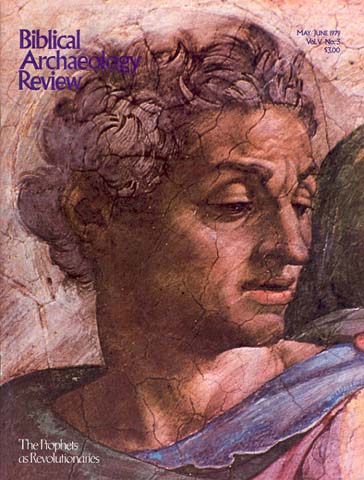Biblical Archaeology Review, May/June 1979

Features
Five Biblical prophets—Amos, Hosea, Micah, Isaiah and Jeremiah—scathingly attacked the sacrificial cult practiced in the shrines of ancient Israel and Judah. These prophets all lived in that turbulent 150-year period that began with the death-pangs of the Kingdom of Israel in the late 8th century B.C. and ended with the Babylonian destruction of the […]
For our ancestors, wild plants and animals of the Holy Land served as symbols and metaphors. These people were closer to nature than we are today and they understood the life cycles of the plants and animals about them. In the Bible, they used this knowledge in a poetic way. The scholars who translated […]
Using well-established principles of form-criticism, as well as the findings of Biblical archaeology and other methods of modern Biblical scholarship, I have discovered that the Superman stories—commonly thought to be of purely American origin—are in fact rooted in ancient Hebrew institutions. The well-known folk tale centers on a hero figure commonly called “Superman.” The […]
In BAR’s version of Superman’s original costume, pictured in “The Hebrew Origins of Superman,” in this issue, Superman the scribe wears the Hebrew letter samekh on his chest. But even people who know how to read modern Hebrew—as it is printed in Israel as well as in synagogue prayer books in this country—will not […]
In 980, the first spade will sink into Tell Dor. As previously announced in BAR (“Yigael Yadin to Head New Excavation,” BAR 04:04), I will direct the field work at the new excavation. In a sense, however, this excavation began several years ago at nearby Tell Mevorakh. The Tell Mevorakh dig, which I directed […]
Two important excavations with volunteer opportunities were omitted from the listings in our March/April issue.
